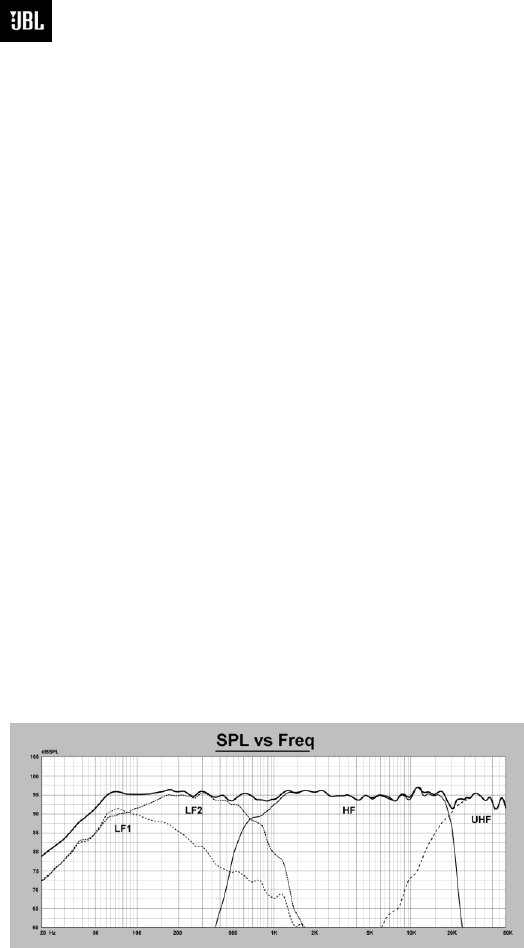
CHAPTER 3
The Project EVEREST DD66000 loudspeaker: a triumph in acoustics and
technology
The following sections describe the primary features and components of the
Project EVEREST DD66000 loudspeaker system.
The basic system configuration is what JBL has historically referred to as an
augmented 2-way. In the 1950’s and 1960’s JBL built primarily 2-way systems
with a 12” or 15” woofer crossed over to a large format compression
driver/horn combination. Some of the systems would be “augmented” by a
UHF device, most usually the 075 ring radiator that would operate above 8 kHz.
These systems would have only a single crossover point in the middle of the
audio range in an attempt to minimize any sonic degradation caused by the
dividing network. The DD66000 has a single midrange crossover at 700 Hz
blending one 1501Al woofer to the 476Be compression driver and horn
combination. The 045Be -1 UHF driver is brought in at 20 kHz to cover an
octave and a half of ultrasonic frequencies. A second 1501Al operates in the
bass frequency range from below 30 Hz to around 150 Hz where it is rolled off
at a gradual 6 dB/Octave. The first order slope ensures proper amplitude and
phase summing between the two woofers over their total operating range. Both
woofers operate below 150 Hz but only one of them extends up to the 700 Hz
crossover point. This is done to achieve proper directivity control throughout
the entire woofer operating range while delivering powerful and extended low
frequency performance. Above 700 Hz, the HF compression driver and horn
combination operates unassisted all the way to 20 kHz. (Fig.1)
Figure 1 – On-Axis response of the DD66000 system and that of each of the transducers through its
crossover network. (2.83V @ 1m)


















